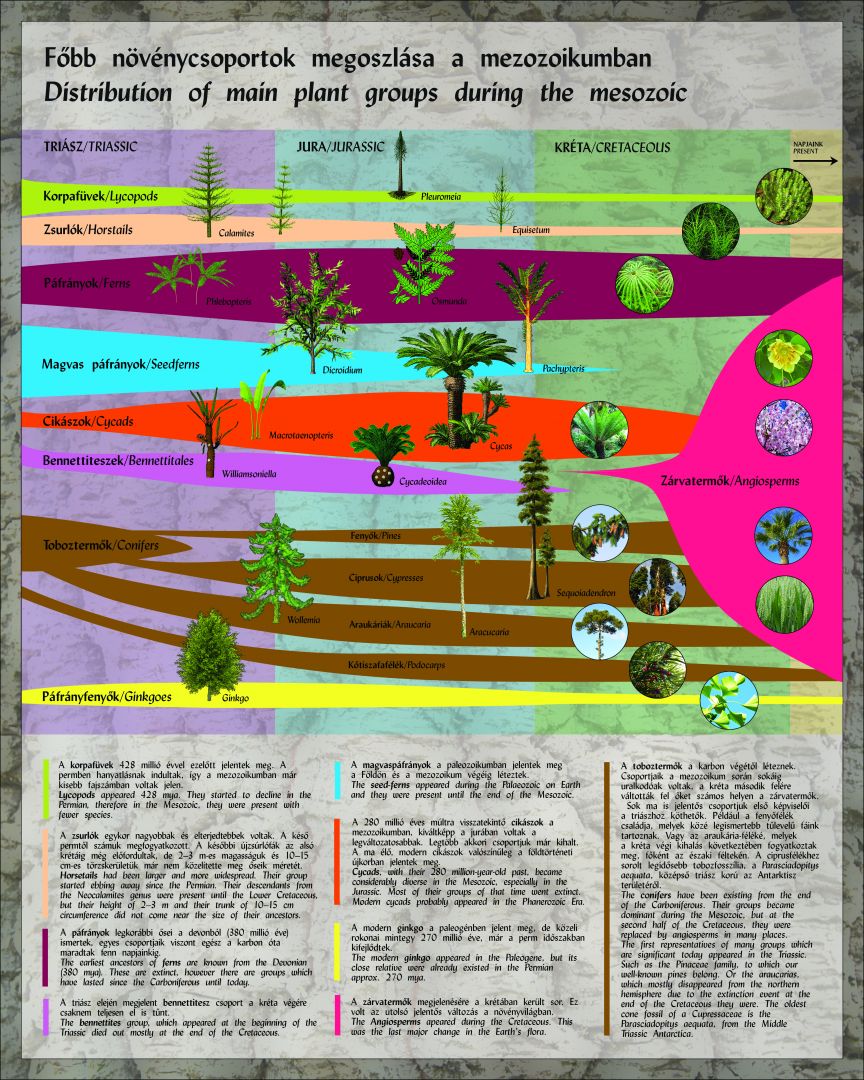FLYING, RESEARCH AND PLANTS - 3. view
Distribution of main plant groups during the mesozoic
Lycopods appeared 428 mya. They started to decline in the Permian, therefore in the Mesozoic, they were present with fewer species.
Horsetails had been larger and more widespread. Their group started ebbing away since the Permian. Their descendants from the Neocalamites genus were present until the Lower Cretaceous, but their height of 2–3 m and their trunk of 10–15 cm circumference did not come near the size of their ancestors.
The earliest ancestors of ferns are known from the Devonian (380 mya). These are extinct, however, there are groups which have lasted since the Carboniferous until today.
The bennettites group, which appeared at the beginning of the Triassic died out mostly at the end of the Cretaceous.
The seed ferns appeared during the Palaeozoic on Earth and they were present until the end of the Mesozoic.
Cycads, with their 280 million-year-old past, became considerably diverse in the Mesozoic, especially in the Jurassic. Most of their groups of that time went extinct. Modern cycads probably appeared in the Phanerozoic Era.
The modern ginkgo appeared in the Paleogene, but its close relatives have already existed in the Permian approx. 270 mya.
The Angiosperms appeared during the Cretaceous. This was the last major change in the Earth’s flora.
Parasciadopitys aequata, középső triász korú az Antarktisz területéről.
The conifers have been existing since the end of the Carboniferous. Their groups became dominant during the Mesozoic, but in the second half of the Cretaceous, they were replaced by angiosperms in many places. The first representatives of many groups which are significant today appeared in the Triassic. Such as the Pinaceae family, to which our well-known pines belong. Or the araucarias, which mostly disappeared from the northern hemisphere due to the extinction event at the end of the Cretaceous they were. The oldest cone fossil of a Cupressaceae is the Parasciadopitys aequata, from the Middle Triassic Antarctica.
